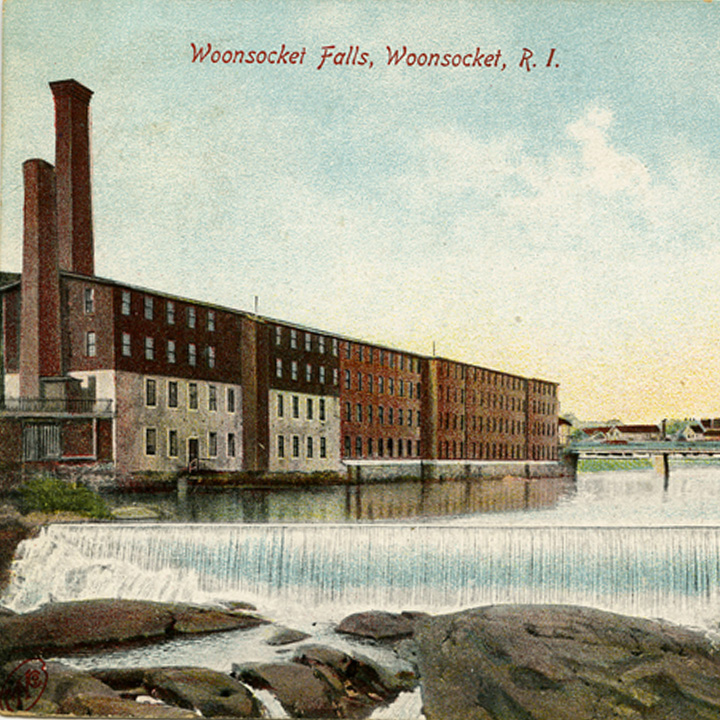The falls that made Woonsocket famous
Creating a the Anniversary Exhibit
With the upcoming 20th anniversary of the Museum of Work and Culture, part of the Rhode Island Historical Society, director Anne Conway knew what was needed to complement the existing exhibits. Well-represented in the Museum is the story of French-Canadian immigration, life on the mill floor, and the religious and cultural impact on Woonsocket created by Christopher Chadbourne’s firm in the environmental exhibits style for which they were well-known. But the story of the mills themselves that brought the workers from Quebec province in Canada and all around the world did not have a place in the Museum. It was time to tell the complicated story of how the mills along the Blackstone Valley changed the landscape of Woonsocket using the new technologies now available.
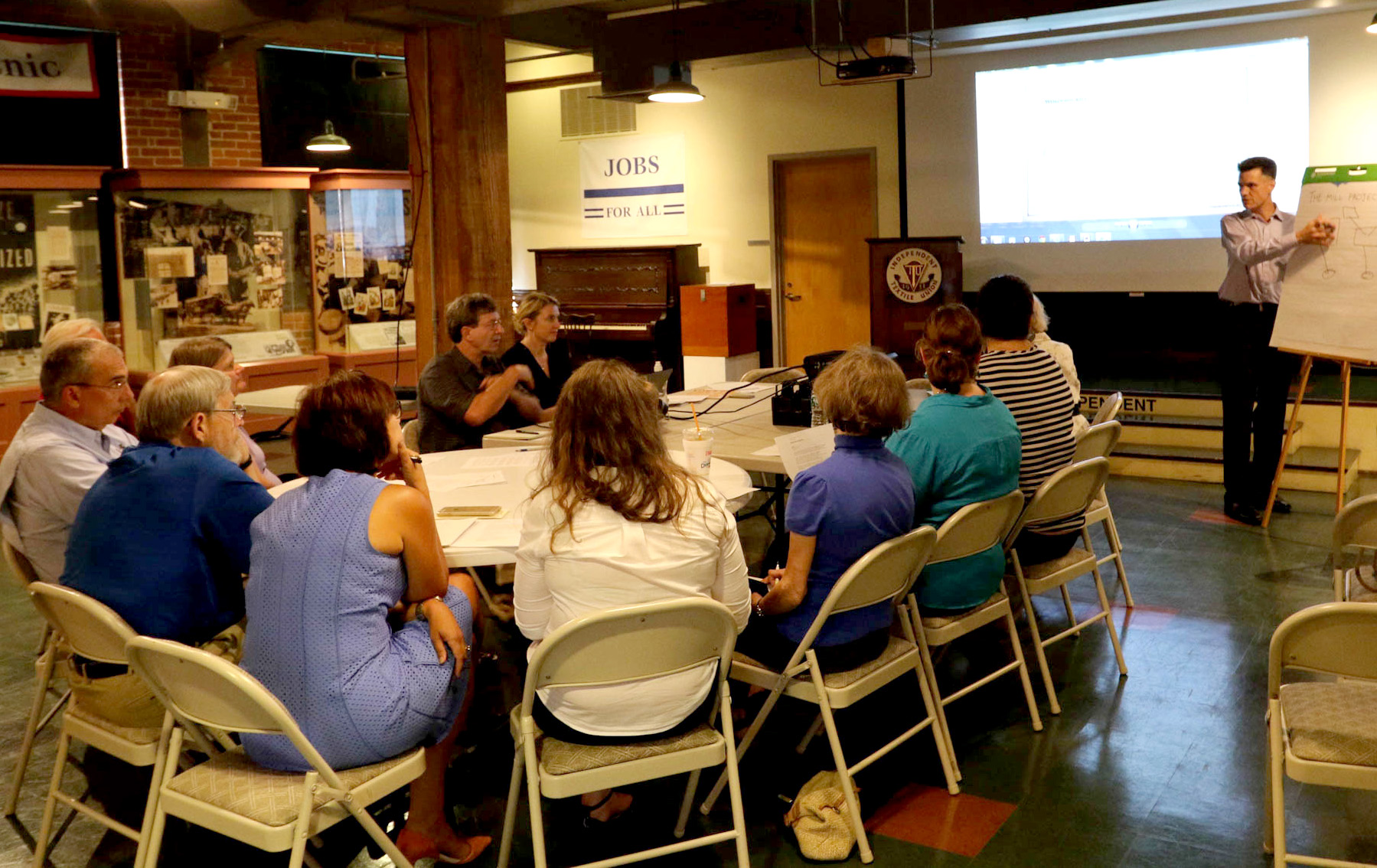
In the beginning: Museum staff, Foundation members, and development team discuss goals and opportunities
The project start-up meeting included a tour around Woonsocket by NPS Blackstone Valley ranger Kevin Klyberg to view the mills some producing woolen goods for the US military others repurposed as living and maker spaces. As the project team absorbed the geography of the city and observed the 30-foot drop of the falls in front of the Museum, they pondered the task set out by the President of the Museum Foundation, Paul Bourget. Develop an exhibit that time travels over the topography of Woonsocket, and create a database of the people who worked there. Our 600sf exhibit now had two major components!
Fortunately, the museum had professional video interviews made possible by a grant from the Blackstone Heritage Corridor for the team to draw on. Our team capped off this phase of work with an animated conceptual design, including a user interface for a gestural touchtable, along with a series of edited interviews by Northern Light Productions. This promotional animation created an effective fundraising and project awareness tool and was first featured by Anne Conway and Ed Malouf at the fall 2015 meeting of the Woonsocket Rotary Club.
Next up was a late night presentation at the Museum during the Murder in the Mill gala event which included actors from a local theater troupe. Is there a better time to present a new project than to a lively audience shortly after a murder mystery is solved? Spirits were indeed high, and after Anne and Ed finished their presentation a textile mill owner in the audience pledged $ 10,000 to the exhibit. This mixture of community, pleasure, and commitment proved to be a hallmark of Anne Conway and the Historical Society for raising awareness and funds for the project.

Mill Memory Alpha testing at Trivium Interactive in Boston
Utilizing the video interview collection, the Museum decided to implement a beta version of the database portion of the exhibit, called the Mill Memory Bank for the annual labor day event on September 26, 2016. Now known as the Mill Memory Bank exhibit, Trivium Interactive of Boston was engaged in developing more than a stand-alone kiosk exhibit, but a website for anyone to enter the information about a friend or relative who worked at a mill along the Blackstone Valley in return for a small donation to the Museum. We may find online forms tedious at times, but a great deal of work goes into them!
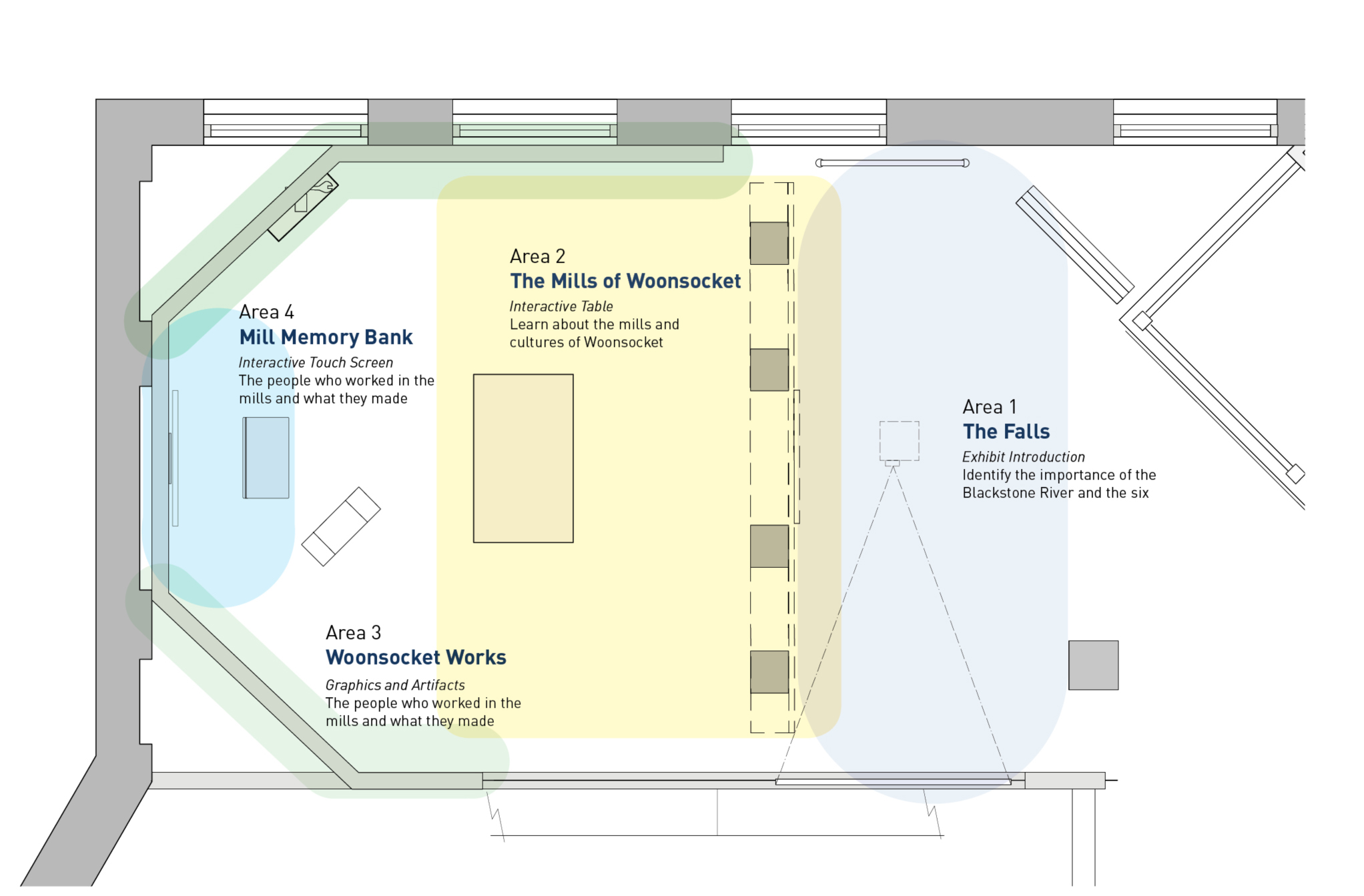
Final exhibit content plan overlaid on the former Woonsocket Works gallery
Exhibit development continued with the new location on the second floor. The gallery had five content areas, The Falls, The Mills of Woonsocket, Mill Memory Bank, and Woonsocket Works. Together they provided a variety of experiences; The Falls was a projection of the waterfall on a translucent screen with roaring water soundscape and an introduction banner that showed the original five Woonsocket Villages. The Mills Ideum touchtable had a docent mode which depicted Woonsocket one era at a time as well as the four-use mode where each visitor could time travel as they wished. The Mill Memory Bank was a list of the who’s who in the community and Woonsocket Works told the workers and products story and their artifacts. An arch representing the famous Alice Mill keeps with the scenic approach to the exhibits at the museum. Would it be built of brick or scenically painted? During a community-wide presentation the Mayor of Woonsocket, Lisa Baldelli-Hunt, suggested we use actual bricks from the Alice Mill which burned down in 2011. The bricks were eventually located and wonderfully integrated into the final exhibit.
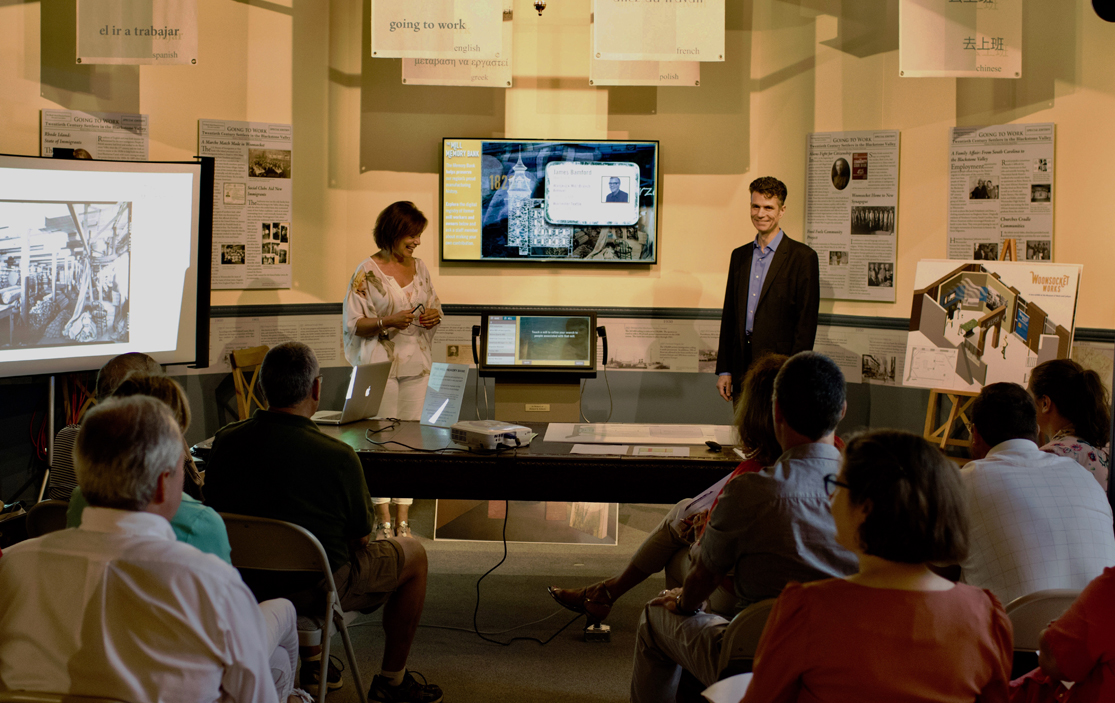
July Presentation to the Foundation and Society with installed Mill Memory exhibit
It is May 2017; the grand opening is only five months away. A google drive database created by the Museum’s Assistant Director Sarah Carr provided a place for researchers to add the information found about each mill. Each mill location had two characteristics, a name which might change if the owner changed, and a product, a mill that spun cotton in 1890 might be spinning nylon in 1930. When Sarah finished writing, there were 130 individual data points, with 98 of them requiring captions and images. This collection of data was an unprecedented documenting of the mills of Woonsocket. Content•Design visited the RIHS Library on Hope Street in search of reference maps and manufacturers advertisements so the streets and railroad lines would appear accurately on each era. Manufacturers advertisements provided images for the graphic murals.
More support and content came from the community. A member of the Finkelstein family provided photographs of workers from his father’s mill that were taken by a fashion photographer. Stitching rubber garments never looked so good on film. These photos enhanced the exhibit quality significantly. The Woonsocket Historical Society provided artifacts of product promotional items and workforce motivation pins. A local Polish market allowed the use of a publicity photo so we could complete our “Communities of Woonsocket” section.
Funding progressed enough, so a carpet that evoked mossy cobblestones and enhanced light adjustments that complemented the new deep blue walls completed the gallery makeover. On November 2, 2017, two days before the 20th-anniversary gala, the builders 42DesignFab made final adjustments to the gallery space and left it gala-ready. The opening party was a smashing success, the exhibit was packed, and these museum visitors stayed until 1:00 in the morning.
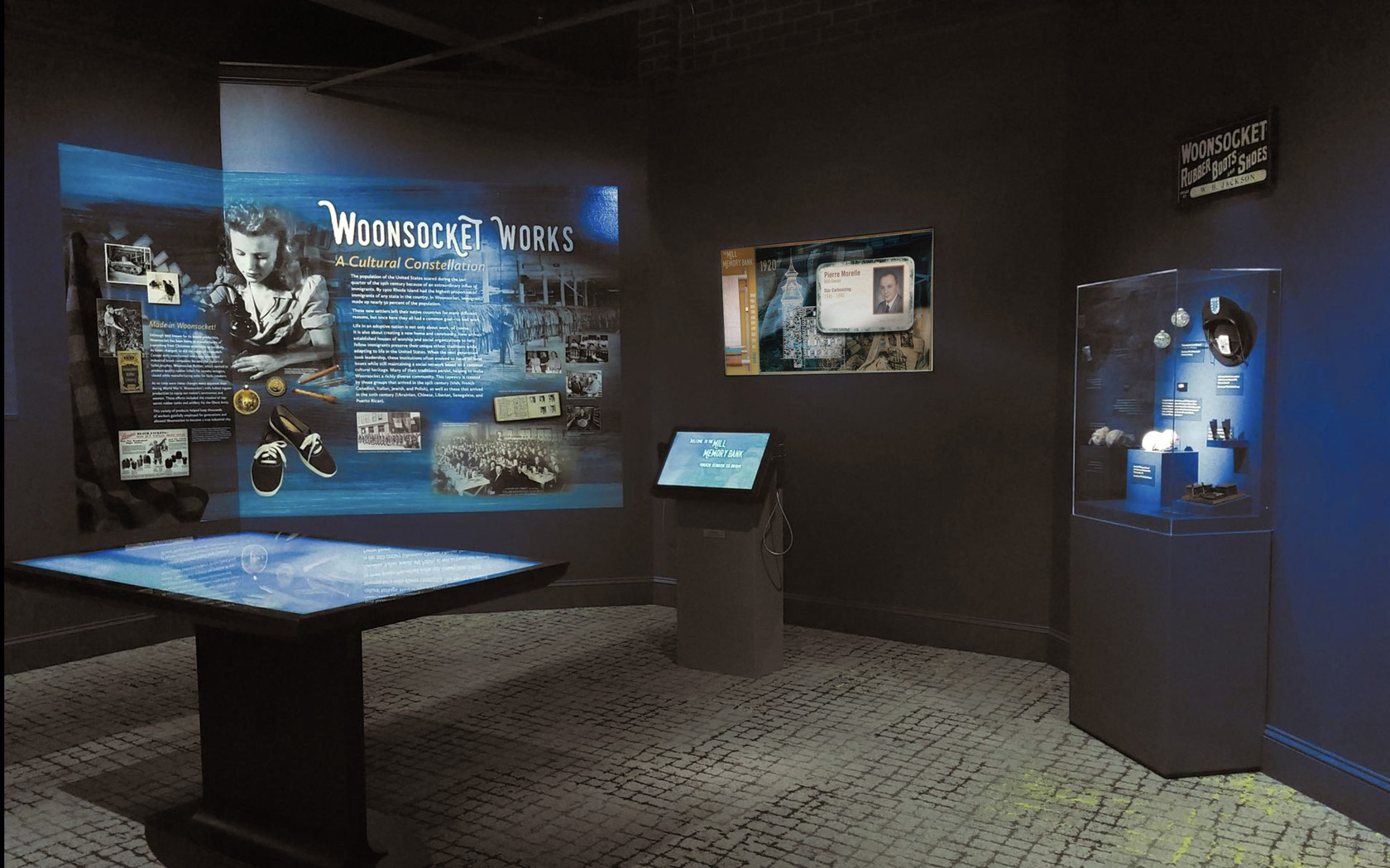
The gallery is ready for the opening gala

Before and after photos of the gallery
This project met the challenging goals set out by the Museum and Foundation, its development was hardly linear, but followed the winding Blackstone River as summed up by Anne Conway:
“We embarked on the project wholeheartedly with the confidence that the community and funding partners would embrace the idea and support it. From phase to phase, new fundraising goals were set, and new challenges emerged. Research, exhibit development, and fundraising happened simultaneously. It took a little over two years to complete Mills along the Blackstone, a beautiful new interactive exhibit which brings to life the history of the local mills and its workers.”
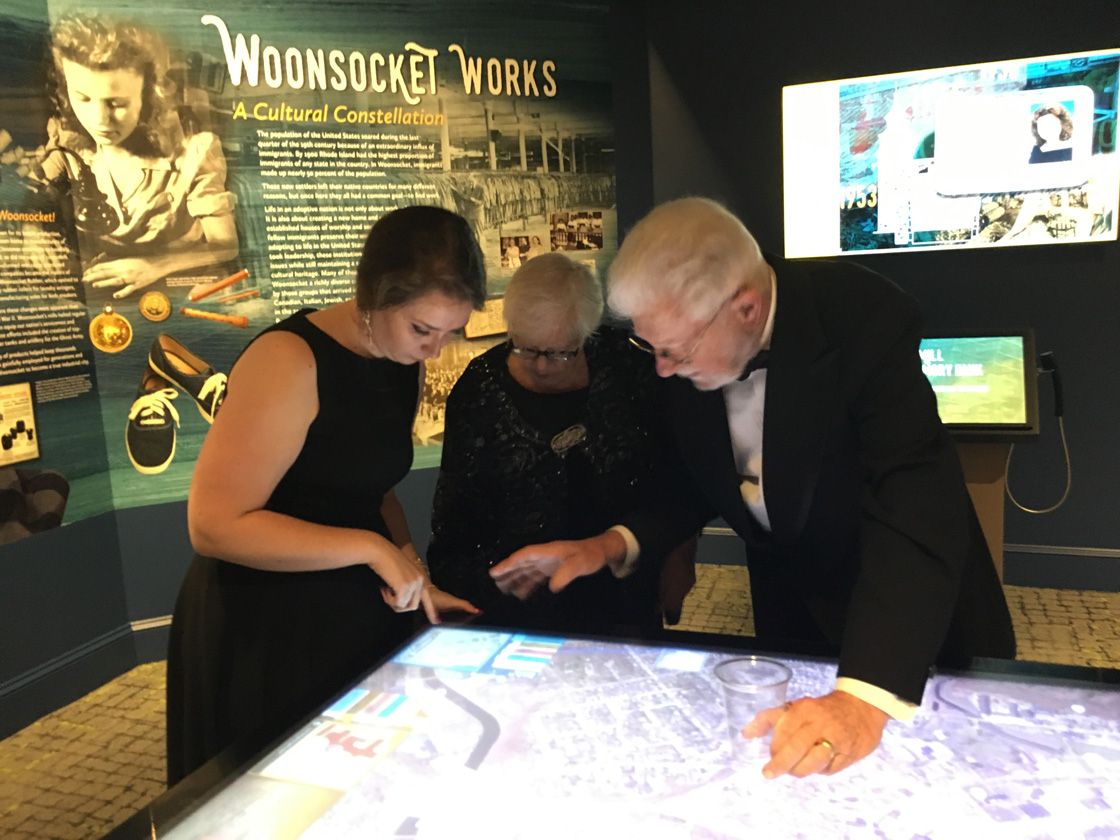
Sarah Carr from the Museum asists gala attendees explore mill history
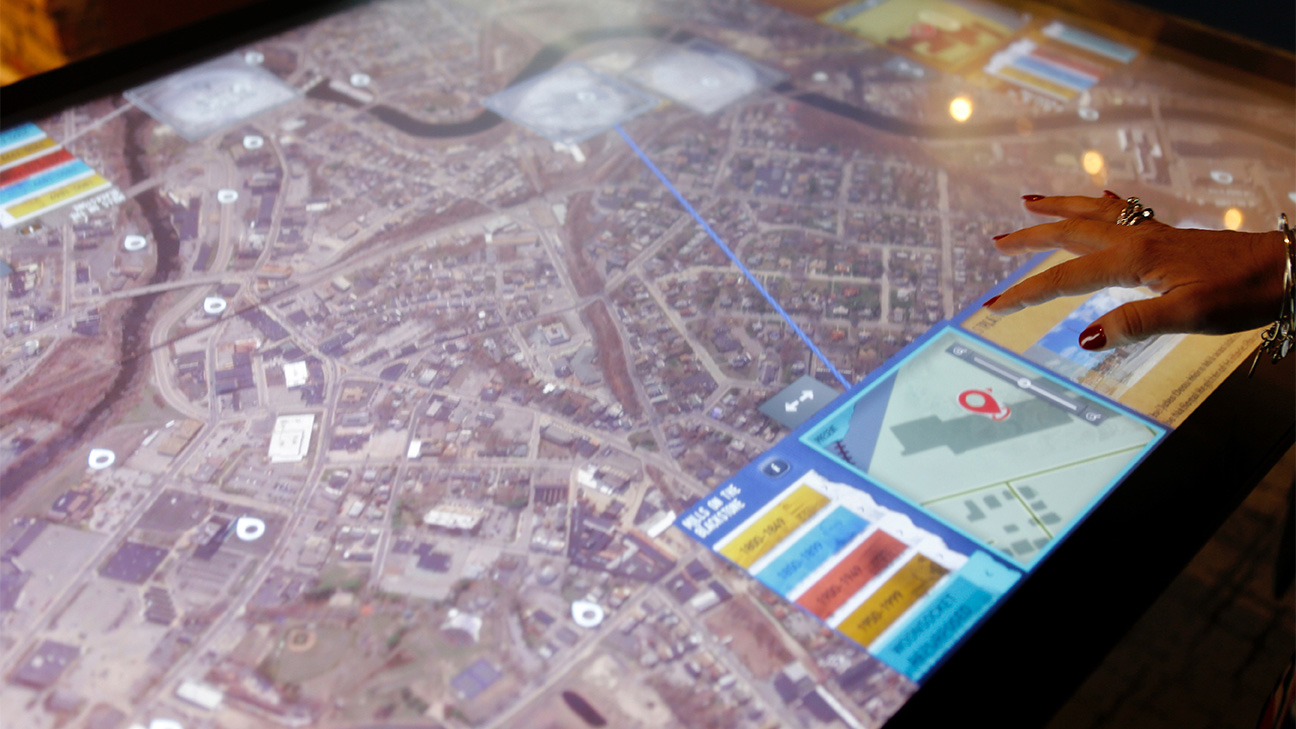
Each visitor has their own portal in which to travel through time for each mill location
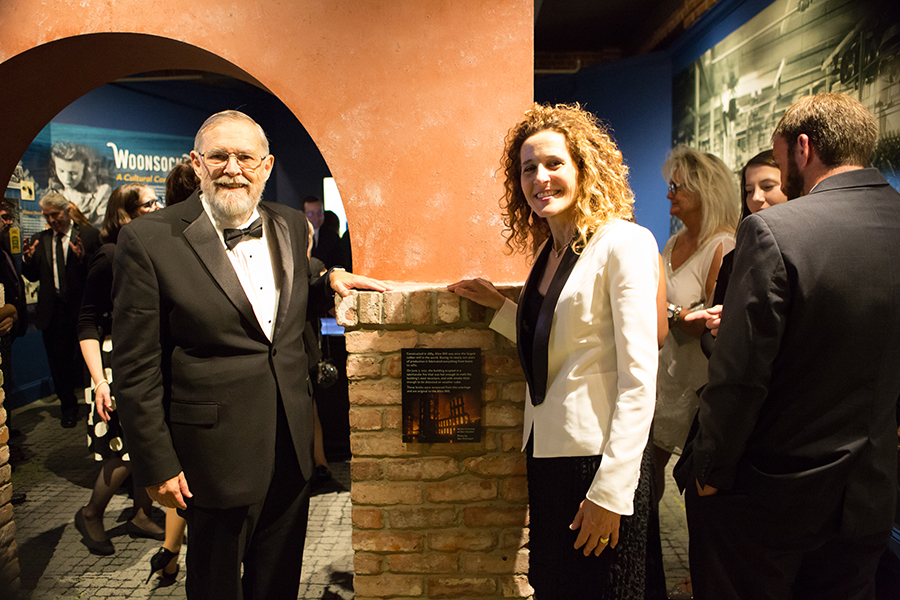
Foundation President Paul Bourget and Mayor Lisa Baldelli-Hunt with bricks from the Alice Mill
http://www.rihs.org/museums/museum-of-work-and-culture/


